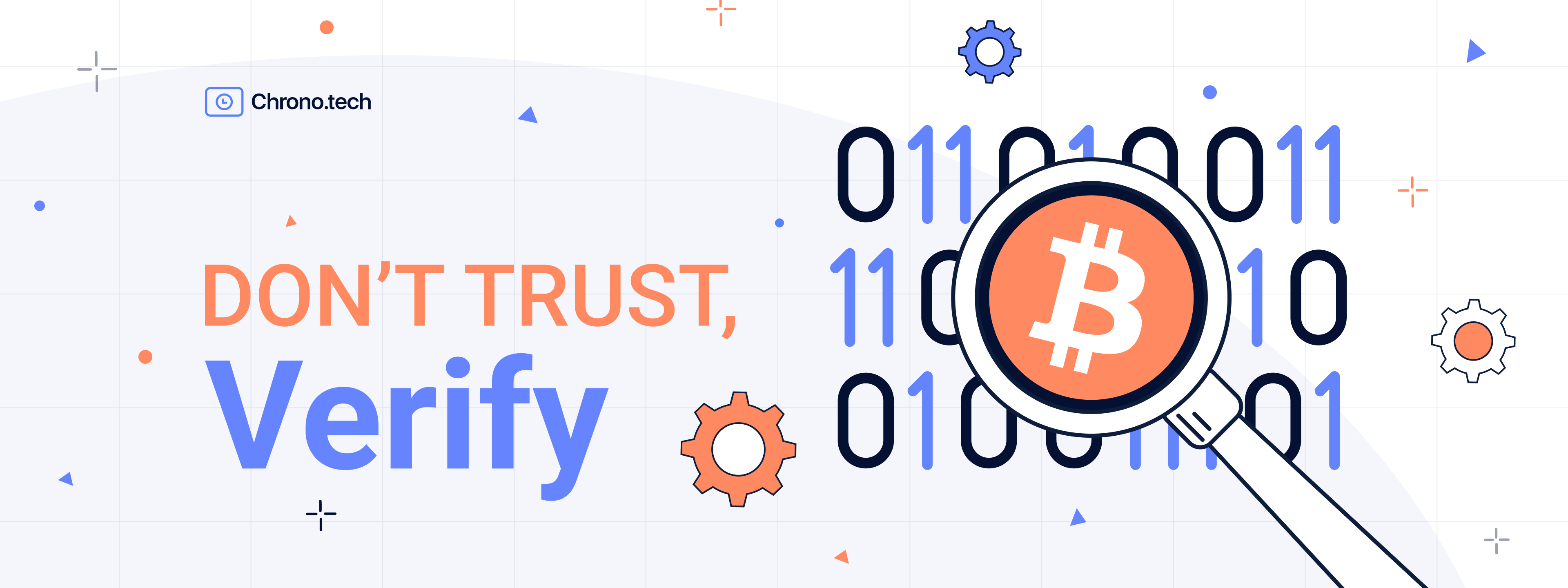Craig Wright is back in the headlines, following a period of relative silence. As the self-proclaimed creator of Bitcoin, Wright has always been a controversial figure. Now, it appears that even some of his most loyal supporters might be having second thoughts.
For the rest of the crypto world, there’s an important reminder here, along with a dose of entertainment and (depending on where you stand) intrigue. Bitcoin is designed to be a trustless technology. It removes middlemen and single points of failure. The slogan engraved on the first physical Bitcoins, and adopted as Bitcoin’s unofficial motto, is ‘Vires in numeris’, ‘Strength in numbers’: a reference to the importance of mathematics and cryptography within the crypto ecosystem. When you can place your trust in the fundamental laws of the universe, it becomes unnecessary to trust fallible human parties.
Every exploit and scam in the crypto space, from Mt Gox to FTX, has been a failure of trust, not of the Bitcoin protocol. Stripped back to its core form, Bitcoin is safer than a bank vault. We just need to use it properly.
The $30 Billion Question
Back in 2016, Australian computer scientist and entrepreneur Craig Wright went on record on the BBC, claiming to be Bitcoin creator Satoshi Nakamoto. (‘I was the main part of it. Other people helped me,’ he told the interviewer.) Experts were quick to pull his statement apart, and a further ‘proof’ he provided was almost immediately shown to be invalid.
While few in the mainstream crypto community are convinced that Wright is Satoshi, a small core are loyal to him, especially within nChain, the blockchain development technology and consulting company at which he is Chief Scientist. Bitcoin Satoshi Vision (BSV), Wright’s large-block fork that he claims was the original plan for Bitcoin, provides some of the key technology for nChain, and has attracted its own community of loyal holders.
The question of who created Bitcoin is not just an interesting puzzle for crypto sleuths and historians. Satoshi is believed to have accumulated around 1 million coins in the early days of Bitcoin, when it was possible to mine BTC with an ordinary CPU. None of those coins has ever moved, but they represent a fortune of almost $30 billion at current prices. Moreover, Satoshi remains an important figurehead for the crypto community, and if he ever reemerged, he would have considerable influence over the ethos and direction the sector takes (which is likely one reason he disappeared). This, of course, is the role that Craig Wright holds within the BSV community.
Over the last week, a leaked email and other events have cast doubt in the minds of even Wright’s most loyal supporters. nChain CEO, Christen Ager-Hanssen (CAH), left the company after he determined that ‘new’ evidence provided by Wright about his supposed identity had been forged, with the intention of misleading investors.
According to the email, Calvin Ayre, a major nChain investor and BSV proponent who has supported Wright and backed financially through numerous expensive court cases, has served him with an ultimatum: Prove you are Satoshi once and for all, or you’re on your own.
A Trustless Technology
Ayre (who has confirmed that the email is real) has challenged Wright to do what he claimed to have done in 2016: sign a message with the private key to the Genesis Block, the first block of the Bitcoin blockchain. This key would only be known to the person who launched Bitcoin, and would therefore constitute extremely strong evidence that this person was Satoshi.
This is the only strategy that the real Satoshi would need to prove their identity. The nature of cryptography means that it is incredibly simple and utterly conclusive if you have the key, and impossible if you don’t. Signing would remove the need for trust, replacing it with a mathematical certainty.
Wright, however, has resorted to complex, time-consuming and costly litigation to support his case, and refused to take the easy and cryptographically watertight option.
Reduce Trust
That simplicity, reliability and elegance extends much further than this episode, and the identity of Bitcoin’s creator. It’s a reminder to everyone in the crypto community that verification is better than trust.
For the average crypto user, that has an important application in the way they store and manage their coins. You can trust another organisation to custody your crypto – trust that they are who they say they are, that their security processes are as good as they claim, that they are honest, that they are compliant, that they hold full reserves that cover all user deposits, and so on – or you can trust the protocol itself.
Over crypto’s short history, tens of thousands of users have lost billions of dollars worth of crypto when they trusted the wrong exchanges: Mt Gox, Cryptopia, QuadrigaFX, BTC-E, Cryptsy, Livecoin, FTX and many others, not to mention lenders like Celsius and Voyager. Hacks, exit scams, and bad risk management brought down these businesses, but all required users to give up control of their crypto and trust the team.
If you have the confidence and technical ability to hold your own crypto, this is a far better solution than trusting another organisation to do it for you. So long as you back up your private keys and keep them safe (ideally using a hardware wallet or a dedicated computer for larger amounts of crypto), then you alone will control your coins, and the odds of being hacked are vanishingly small.
There are circumstances in which it is preferable to custody coins on an exchange, for example if you lack the skills or confidence to manage your own crypto, or if you are actively trading them. If that’s the case, choose a reputable exchange with a strong track record of security and excellent customer service, and check their compliance status with the relevant financial authorities.


